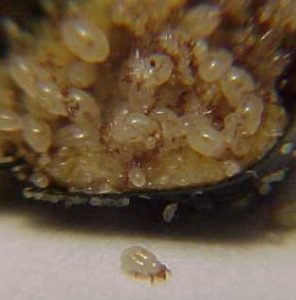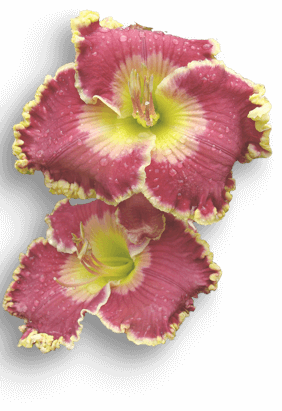Have been found in several countries including the USA, Canada and Europe. These are very small shiny whitish mites with reddish brown legs, sometimes having two brown spots on the back. Bulb mites feed in colonies in rotting tissue, usually at or below ground level, and are found on many different plants. You may see groups of tiny white specks some of which, if you watch very carefully, may be observed to be moving slowly. A magnifying lens is necessary for more detailed inspection. While they are often secondary to some other damage to the plant such as mechanical injury, insects etc., these mites are also thought capable of attacking healthy tissue and can introduce diseases with the pathogens they carry. Bulb mites can survive in the absence of a growing plant by feeding on other organic matter. If plants are growing poorly, send a sample to your Extension Diagnostic Service, or your country’s equivalent, for investigation and advice.

Photo: Used with permission from University of California Statewide IPM Project, Jack Kelly Clark photographer. Any additional uses of this image must be received from the copyright holder directly – AHS does not have permission to grant additional usage of this image for any purposes

This image shows a bulb mite below several others on a daylily seed.
Image by Sue Bergeron, used with permission
See also: Pests

